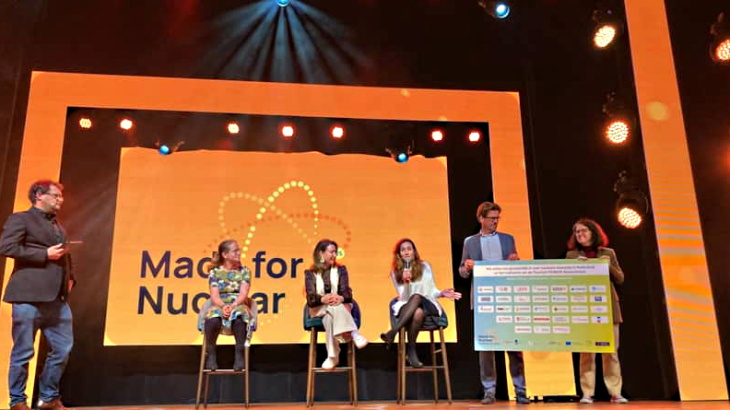A small robot has been developed to investigate the inside of the primary containment vessel (PCV) of unit 2 of the damaged Fukushima Daiichi nuclear power plant in Japan.
.jpg) |
| The small robot developed for unit 2 PCV surveys (Image: Toshiba/IRID) |
The robot - developed by Toshiba and the International Research Institute for Nuclear Decommissioning (IRID) - will be used to determine the location and position of any fallen objects within the PVC, as well as conditions along access routes to the base of the vessel. This must be done prior to a full investigation around the PCV base, the companies said in a joint statement today.
Measuring some 54cm in length, 9cm high and 9cm wide and weighing about 5kg, the robot is designed to enter the unit's PCV along a pipe about 10cm in diameter. It is remotely operated by a wired cable. The robot can operate for around ten hours in an environment with a dose rate of 100 sieverts per hour.
LED lights and cameras are attached to both the front and rear of the robot. Once the robot has reached a point near the centre of the PCV, the operator will raise the rear section - "like the tail of a scorpion", the developers said - and video record the interior of the vessel. It is also fitted with a radiation dosimeter and a thermometer to measure conditions within the PCV.
The training of operators for the robot will begin in July, Toshiba and IRID said, with the aim of deployment on site by the end of August.
Two shape-changing robots - developed by IRID and Hitachi-GE Nuclear Energy - were used in April to survey conditions within the PCV of unit 1 at Fukushima Daiichi. The first robot stopped working on the initial day of surveying after becoming stuck in a gap on the floor surface. The second robot was employed to complete the investigation.
That robot design consisted of three segments: the robot's main body and two compact crawlers. It can assume a long, straight shape for passing through narrow spaces, such as pipes. Alternatively, it can rotate its crawlers by 90 degrees in relation to its central body to assume a U-shape, with the crawlers providing better stability when travelling over flat surfaces.
The robot is 9cm in height. Depending on the position of its crawlers, it is 25cm to 64cm in length and between 6.5cm and 27cm in width. Weighing 7.5kg, the robot is operated via a 40m cable.
Many Japanese and overseas companies and organizations have been supporting and cooperating with Tokyo Electric Power Company (Tepco) on developing robots and related technologies for deployment at Fukushima Daiichi. Tepco expects to apply remote techniques further during the decommissioning of the plant, such as in the decontamination of high-dose radiation areas inside the reactor buildings and the removal of fuel debris from the reactor contaminant vessels or the reactor pressure vessels.
Researched and written
by World Nuclear News




_16403_79272.jpg)


_69218.jpg)

_76087_55556.jpg)



